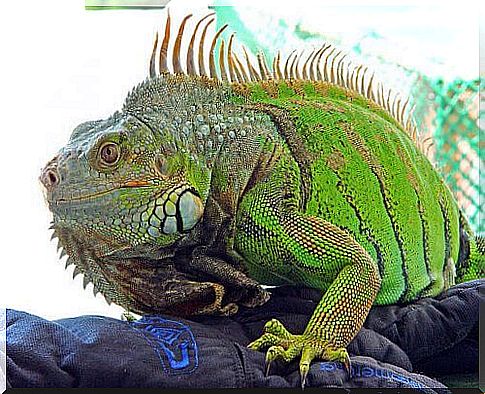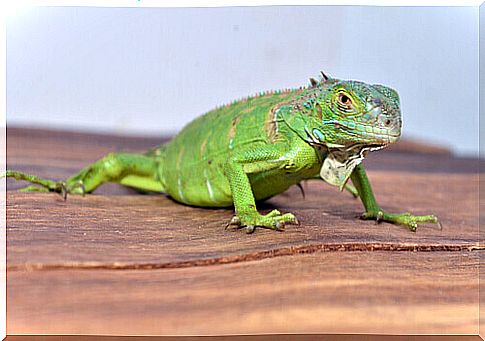Metabolic Bone Disease In Reptiles

Exotic animals are complex pets, among other things, due to their nutritional needs. A common dietary mistake is the most frequent cause of metabolic bone disease, which damages the bones of our reptiles.
Many of the diseases that affect these animals, including metabolic bone disease, are easy to prevent if we know our pet’s needs.
Metabolic bone disease can occur in many species of reptiles, such as snakes and lizards. But the species that most suffers from this disease is the iguana, so knowing the basics of an iguana will be vital to prevent it from developing this process.
Causes of metabolic bone disease
This disease is mainly due to lack of calcium. This is usually conditioned by diet, but also due to vitamin D deficiencies due to handling errors.
More specifically, it is due to a mismatch in the relationship between calcium and phosphorus, as these minerals need to be in balanced amounts in the body. A calcium deficiency can be due to an excess of phosphorus.

The fact is that calcium is extracted from the bones and therefore the bones become very weak and even end up deforming.
In addition to a lack of calcium and an excess of phosphorus in the diet, an excess of fat can also decrease calcium absorption. Lack of exposure to UVA rays causes vitamin D calcium absorption problems, so this is another cause.
Symptoms of metabolic bone disease
This disease, which usually appears in young animals, is manifested by inflammation of the jaw. This is the area most prone to swelling, however, this condition affects the entire skeleton.
Extremity bumps, finger deformities, and spinal deviations can be other symptoms; this can lead to movement problems and even fractures.
These deformities and fractures will be more evident as the demineralization that our pet suffers worsens. In chronic cases, which take a long time and become very visible, it is necessary to use a prosthesis with wheels.
In these cases, it is vital to take our pet to the vet, as a change in diet will not be enough. Our pet will suffer pain and may even refuse to eat for it, to avoid aggravating the pain.
This can translate into extreme thinness, a very typical symptom in chameleons, as this process often affects their long tongue. Also, the veterinarian is the only one who can diagnose the disease through an x-ray.
Treatment and prevention of metabolic bone disease
In mild cases, and if we just want to prevent the disease, we must be more rigorous with the care offered to the animal.

In this regard, it is vital to restructure our pet’s diet and include natural sources of calcium. The use of artificial supplements is fine, but plants like dandelion provide a great natural calcium supplement.
On the other hand, the ideal food for a turtle, an iguana or any reptile that suffers from this disease is obtained based on foods that contain a proportion of calcium that is twice that of phosphorus.
In addition, the temperature degrees of our terrarium must be adapted to the species and it is essential that reptiles receive UVA rays daily, ideally that part of this light is natural, that is, it comes from the sun.
Thus, the most serious cases will require medications based on calcium supplements, which must always be carried out under veterinary control. And, of course, the absence of treatment usually ends with the animals’ death.








